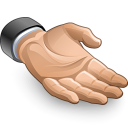Accessibility.com opens a new window recently reported 2,352 website accessibility lawsuits were filed in 2021 with Consumer Goods, Services, and Retail companies targeted the most. Of those an estimated 300 litigated websites were using third-party overlays. This is a significant increase over previous years.
Key Points of 2021 for Websites Striving for ADA Compliance
- (2,352) Web Accessibility Lawsuits were filed
- (955) were filed against Consumer Goods, Services, & Retail Industries
- (1,474) were filed against New York State Businesses
- (300) targeted websites with Third-Party Overlays
As a result, Accessibility lawsuit litigation moving into 2022 carries significant momentum. During the fourth Quarter (Q4) of 2021 actually recorded the highest total of website lawsuits in Accessibility.com’s opens a new window database history. More than 30% of the years total were filed during October, November, and December of 2021 totally 711 with nearly 17% (398) of the lawsuits taking place just in November 2021. Accessibility.com’s opens a new window conservative approach to these totals address only “true” website accessibility cases. In other words, the 2,352 cases referenced here do not include physical or other accessibility cases – only true website accessibility cases.
Accessibility.com’s opens a new window only includes cases and calculate case totals that are:
Verifiable
Each case is reflected in their tallies ties directly to a case in the dockets and pleadings for review.
Website accessibility cases
They only include cases in which the allegation is that the digital property is not sufficiently accessible.
Published
Their full database is freely-available to provide full insight into the generation of metrics and the details of the lawsuits themselves.
Most Targeted Industries in Accessibility Website Litigation
About 41% of the year’s total cases targeted Consumer Goods, Services, & Retail Industry group, comprised of staple and discretionary items alike. Followed by Apparel, Durables, & Beauty at 16% next in the top-five industry groups. The table below breaks down the top-five most targeted industries of 2021 of accessibility website lawsuits from most to least.
Table 1: Targeted Industries
| Industry | # Lawsuits |
|---|---|
| Consumer Goods, Services, & Retail | 955 |
| Apparel, Durables, & Beauty | 375 |
| Food, Beverage, & Tobacco | 194 |
| Tech, Software, & Internet Services | 192 |
| Health & Medical | 179 |
The Leading States for Accessibility Website Litigation in 2021
More than 62% of cases filed nationwide in 2021 where filed in the State of New York with an all-time record-breaking 310 cases filed in November alone. This was followed by 704 filings in California; making the Golden State second in most web accessibility lawsuits of 2021. The chart below contains the breakdown of the top-five states receiving lawsuit filings.
Chart 1: Top Five States for Lawsuits in 2021
An Estimated 300 Targeted Websites Were Using Overlays
Approximately 300 filings, Accessibility.com opens a new window estimated, were using third-party accessibility overlay tools.
Typically, overlays (or widgets) apply the third-party’s source code to the existing code of the client website via jQuery or other forms of code injection in an effort to modify the user’s experience by overriding or adding to the existing code. They are often used as a replacement or quick fix instead of manually identifying or resolving accessibility issues in a website’s code and/or design – which are generally identified during an audit or test from an accessibility subject matter expert. However, by not addressing these underlying accessibility issues, the effectiveness of overlays has been debated.
In April 2021, Accessibility.com opens a new window began searching for overlays on litigated websites – between then and the end of the year, they detected 225 (12.75%) targeted websites using overlays. Applying that average to 2021’s total number of lawsuits, they projected that 297 litigated websites were using a third-party overlay tool.
12.75%
of targeted websites, in 2021, were using third-party overlays
Overlays “will not suffice to achieve Accessibility”
Disability Rights Advocates representing the LightHouse for the Blind and Visually Impaired of San Francisco and the individuals Erin Lauridsen and Frank Welte filed a lawsuit against Automatic Data Processing, Inc. (ADP) in September of 2020.
In December 2021, Disability Rights Advocates published a statement
“Accessible” (or “Accessibility” or “Access”) means that blind and low vision individuals have independent access to the same information and equivalent ease of use of functionalities available to sighted individuals via the Website or Mobile Apps. For the purpose of this Agreement, “overlay” solutions such as those currently provided by companies such as AudioEye and AccessiBe will not suffice to achieve Accessibility.
Avoid “layered” or “overlay” toolbar/widget and AI remediation solutions
If it sounds too good to be true. It is. In the past year a number of silver bullet “solutions” have flooded the market to meet the hopeful demand of website owners for a quick cheap fix. While some may serve as a temporary bandaid, others are pure snake oil. There are a few variations of these, but most take the form of an embedded snippet of javascript that adds an accessibility toolbar to a site and/or injects a fresh layer that addresses some, but not all accessibility issues. Using this toolbar, and user can then adjust things like color contrast, typeface size, spacing.
There are also automated solutions that claim to utilize artificial intelligence (AI) to “remediate” the website for you – which also use javascript/jQuery overlay methods.
These solutions don’t actually meet those people with disabilities – generally speaking those with impairments generally have their own browser settings and assistive technology options like screen readers. These toolbars and overlays most often do not enable functionality of Assistive Technology – if anything they tend to make it more challenging.
On average automated tools only detect ~30% of WCAG issues, understand these layered and AI solutions can’t be expected to do any better. That leaves 70% of a site inaccessible to them and potentially inaccessible to those with impairments.
Especially annoying are Alternate Accessible Website providers.
These don’t even attempt to improve the accessibility of the primary site but rather they add a little accessibility icon to the page that links to a separate website “accessible” version of the site. However, in reality, they are reduced and most often have different content and lack the same functionality of the primary website. This in turn fails the “full and equal enjoyment” clause of ADA Compliance and in itself is discriminatory.
Footnote
- “Industry Leading HR and Payroll Company ADP Works with LightHouse to Enhance Accessibility ofProducts to Blind Users.” Disability Rights Advocates, 16 Dec. 2021. https://dralegal.org/press/adpsettlement/ opens a new window (Accessed 3 Jan. 2022). Return to Content

